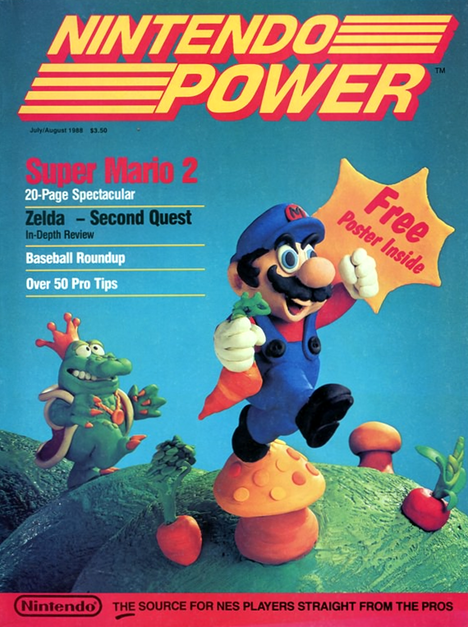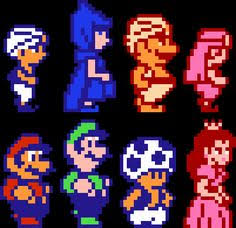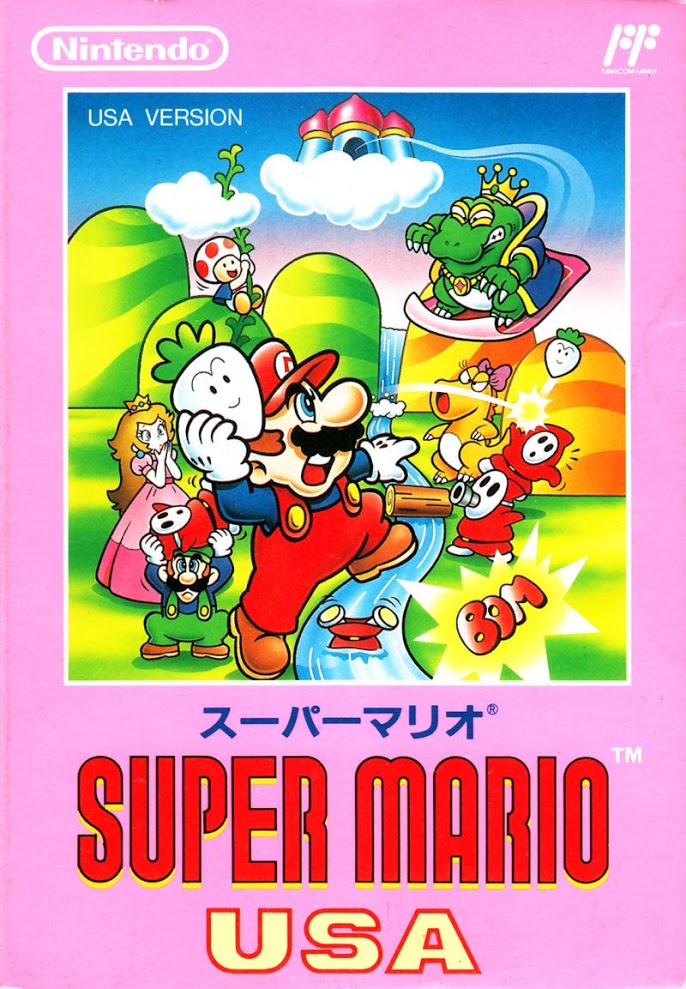If there’s one gaming character that has stood the test of time, that character is Mario. For over 35 years, this Italian plumber has captured the hearts of gamers young and old, by embarking on countless adventures in the mushroom kingdom and beyond.
While Mario was featured in plenty of games before the iconic “Super Mario Bros,” his rise to stardom truly started with the original Mario NES trilogy. This thrilling eight-bit trilogy pushed the envelope of how platforming games were made visually and structurally.
Right in the center of this nostalgic trio, sits one often underrated game; “Super Mario Bros 2.” Despite being fondly remembered by most 80’s kids, this sequel didn’t quite reach the iconic status that the first and third one reached.
For one, this game was very different from the first Mario platformer. You were no longer stomping on goombas or koopas, you were now plucking vegetables from the ground and chucking them at shy guys. The series main antagonist King Koopa (Bowser), was replaced by an evil frog king named Wart.
 Despite these changes and many more, the game was still a big hit, and is beloved by many old-school Nintendo fans. But the question still remains; why was it so different? How was this game made? And where did it all start? In order to answer these questions, we must cast our minds back 30 years, and delve deep into the vast history of Nintendo. From the development of the game, to the backlash, and an unexpected solution, this is the story of “Super Mario Bros. 2.”
Despite these changes and many more, the game was still a big hit, and is beloved by many old-school Nintendo fans. But the question still remains; why was it so different? How was this game made? And where did it all start? In order to answer these questions, we must cast our minds back 30 years, and delve deep into the vast history of Nintendo. From the development of the game, to the backlash, and an unexpected solution, this is the story of “Super Mario Bros. 2.”
In order to fully comprehend the creation of “Super Mario Bros. 2,” we first must briefly look at the game that started the legacy, “Super Mario Bros.”
Originally packaged with the Nintendo Entertainment System in 1985, “Super Mario Bros.” was a huge hit in both North America and Japan. The game sold over 40 million copies, making it the highest grossing NES game of all time. Shortly after the development of the arcade version of the game, “VS Super Mario Bros.,” the idea for a sequel began to take form.
Mario creator, Shigeru Miyamoto, was at the time working on an upcoming game for the new Famicom Disk System in Japan. This game was “The Legend of Zelda.” With such a large project on hand, Miyamoto was unable to serve as full-time director for “Super Mario Bros. 2.”
Thus, Takashi Tezuka, who served as assistant director of the previous Mario game, took the helm as director of the sequel. Several stages from “VS Super Mario Bros.” were added. Miyamoto even helped tinker with a few levels. Within four months, the game was finished, and was released on the third of June, 1986 for the Famicom Disk System.

“Super Mario Bros. 2” was a hit in Japan, and became the best-selling game for the Famicom Disk System. Due to its success, Nintendo began concocting a plan to release it in North America. With high hopes, they sent it to North America for review.
The game was reviewed by a young man named Howard Phillips. Howard Phillips was a Nintendo employee and game enthusiast, tasked with testing new Nintendo products before there were released. Nintendo of America president, Minoru Arakawa, valued the opinion of a North American Gamer.
In the year 1986, Phillips tested several new Famicom games to see if they would be successful in North America on the NES. Among them was “Super Mario Bros 2.” He was killed in the first level by a poison mushroom, which he had mistaken for a power-up. As he continued playing, He was appalled by the insane level of difficulty of the game. Howard Phillips met with Minoru Arakawa to voice his complaints.
In addition to the cruel level design, the game looked identical to the first Mario game. Nintendo of America was looking to display new graphics and gameplay in their upcoming games. By the time they could release the game overseas, it would seem outdated in comparison to other games of the time. Eventually, the decision was made not to release “Super Mario Bros 2.” in North America.
While Nintendo ultimately made the wise choice, what was to become of Mario? Sega’s mascot, Alex Kidd gaining popularity, as were many of Nintendo’s other third-party characters. In order to keep their flagship mascot relevant, a sequel was more than necessary. Eventually the idea surfaced to take an older Nintendo title, and transform it into a Mario game.

But which one? Which game could capture the same light-hearted and adventurous feel of the original “Super Mario Bros?” Well in 1987, the answer became clear. A game was created by R&D4, the same team behind “Super Mario Bros.,” in cooperation with Fuji TV in Japan.
The game was called “Yume Kojo: Doki Doki Panic,” and was made to promote the upcoming event, Yume Kojo 87, which translates to Dream Factory 87. The game gained much critical acclaim. The Famitsu magazine in Japan gave it a thirty-one out of forty. When Nintendo of America considered reworking an older title as a Mario game, “Doki Doki Panic” was seen as a possible candidate.
The game was sent to Nintendo of America. Nintendo of Japan proposed simply using Mario characters in place of the Dream Factory characters. This way, Nintendo could easily release the game in North America without any legal problems. Nintendo of America approved the idea, and R&D4 worked swiftly to remaster the game for a North American release.
In 1988, Howard Phillips received a copy of the new “Super Mario Bros. 2” for review. Pleased with the new game, Nintendo of America began preparations to release “Super Mario Bros. 2” around the holidays.
In July of that year, Nintendo launched their brand-new gaming magazine, Nintendo Power. In order to generate hype for the “Super Mario 2,” the first issue’s cover featured a clay diorama of Mario, and the game’s main villain, Wart. This diorama was provided by Will Vinton Studios, who had also worked on the Claymation for the popular California Raisins commercials. Nintendo Power issue #1 also included several tips, tricks, and walkthroughs for the first few levels of the game.

Finally, on October 9, 1988, “Super Mario Bros. 2” was released in North America, where it became the must-have Christmas item of that year. As for the original “Super Mario Bros. 2” of Japan, it wouldn’t reach North America until 1993, when it was included as a playable game in “Super Mario All-Stars.” Slight adjustments were made to ease the insane difficulty, and it was retitled “Super Mario Bros: The Lost Levels.”
Despite the significant difference from other Mario games, “Super Mario Bros. 2” left a lasting impact on the franchise as a whole. Many of Mario’s most common adversaries like Birdo and Shy Guy, made their debut in this game. While it may not be as polished as the Mario games that came after it, “Super Mario Bros. 2” was a revolutionary game for Nintendo then, and is a nostalgic classic to look back on now.
Samuel Claude
Reporter


